When clients come through the door, especially in the initial stages of therapy, their affect tends to be very dysregulated. High levels of negative emotional arousal will tend to colour their perception and experience very strongly. Therefore, a most urgent therapeutic task is to support clients regulate their bio-affective state. As clients become more settled and oriented to the present moment, it is possible to gently guide their physiology, affect and cognitive systems towards greater integration. The purpose of integration is to embody and strengthen skills of bio-affective deactivation, in order to build greater processing capacity in relation to challenging experiences.
This organismic learning gradually empowers a clients’ system to sense into the rich complexity of their experience, leaving no part out, and gradually inhabit more spaces of their psycho-somatic dynamics. Finally, this contained and embodied process of progressive complexification grows and builds until it reaches its next threshold of capacity, at a far-from-equilibrium state, leading to new emergent properties to arise: an insight, a new state, a previously unexplored perception. As an attempt to conceptualize this trajectory, NeuroSystemics proposes a 3-step therapeutic mapping: regulation, integration and liberation. This paper will provide some insights from the humanistic and contemplative sciences to explicate this journey.
Therapist as model for regulation
One of the most powerful tools for therapeutic success is the therapist herself. The common factors research paradigm, analyzing over 70 years of clinical data, explains that the therapeutic alliance, comprised of (i) a trusting and compassionate therapist-client relationship, (ii) clear goals and (iii) tasks to achieve these goals, is more important that any specific technique. These relational factors, common to all successful therapeutic outcomes found in the literature, can be embodied through a series therapeutic attitudes: friendliness, compassion, joy and equanimity.
In Buddhist contemplative practice these correspond to “brahma-viharas” (Hinsdale, 2012), literally meaning divine abodes. These have many similarities to Carl Roger’s (Rogers, 1986) humanistic principles of congruence, empathy and unconditional positive regard, and offer a more differentiated map based on the client’s bio-affective shifts. Simply put, a therapist would attune and respond to their clients’ bio-affective state with a therapeutic attitude that would support greater ease, often corresponding to the following pairings:
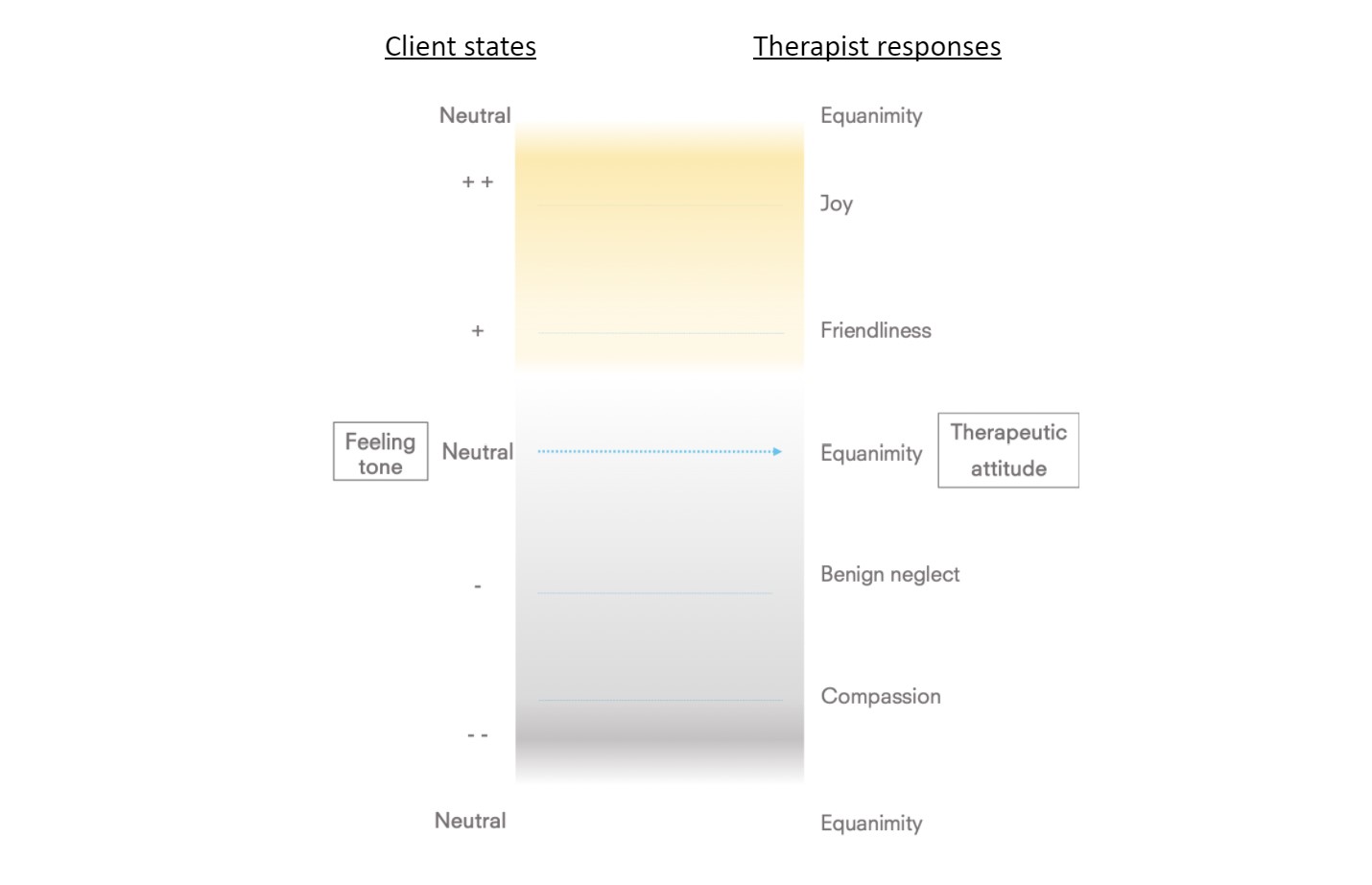
Brahma-viharic qualities
In the face of negative affect, one of the most meaningful supports a client can receive is compassion (karuna). It is a positive state of mind where one feels joy at the possibility of lending a caring hand to one in need. In some cases, when the client is in the midst of distress, it may be possible to offer an attitude of benign neglect. The therapist’s attitude of genuine friendliness (metta) creates the most basic and fundamental affective space within which the client can feel safe and develop trust. Friendliness is mostly relevant for therapists to practice when clients experience somewhat pleasant feeling tones. As a principle, as the therapeutic process evolves, therapists’ higher-level feeling tones (joy as the highest) will become attuned responses to clients’ lower-level affective tones (very negative as the lowest). Therefore, over time, it will progressively be possible to expand the quality of friendliness to neutral and negative feeling tones.
The therapeutic encounter offers many moments of joy (mudita), which is a skill where the therapist attunes to the client’s joys, even momentary upsurges of joy – feeling joy in regard to the joy of the client. As with so many causal processes in complex systems, they are bi-directional or even multi-directional. At times, therefore, it can work in the other direction: the therapist’s joy can be contagious enough to help the client rise up to that level of affective intensity. Equanimity (upekkha), synonymous with equipoise, is a balancing quality helping to bring an evenness of mind, an investigative quality to all negative and positive experiences.
Positive emotions have shown beneficial effects in terms of their “undoing” of negativity. Fredrickson’s “undoing hypothesis” is based her empirically tested Broaden-and-Build theory (2001). The key element here is to understand the positive and negative feedback loop processes at play.
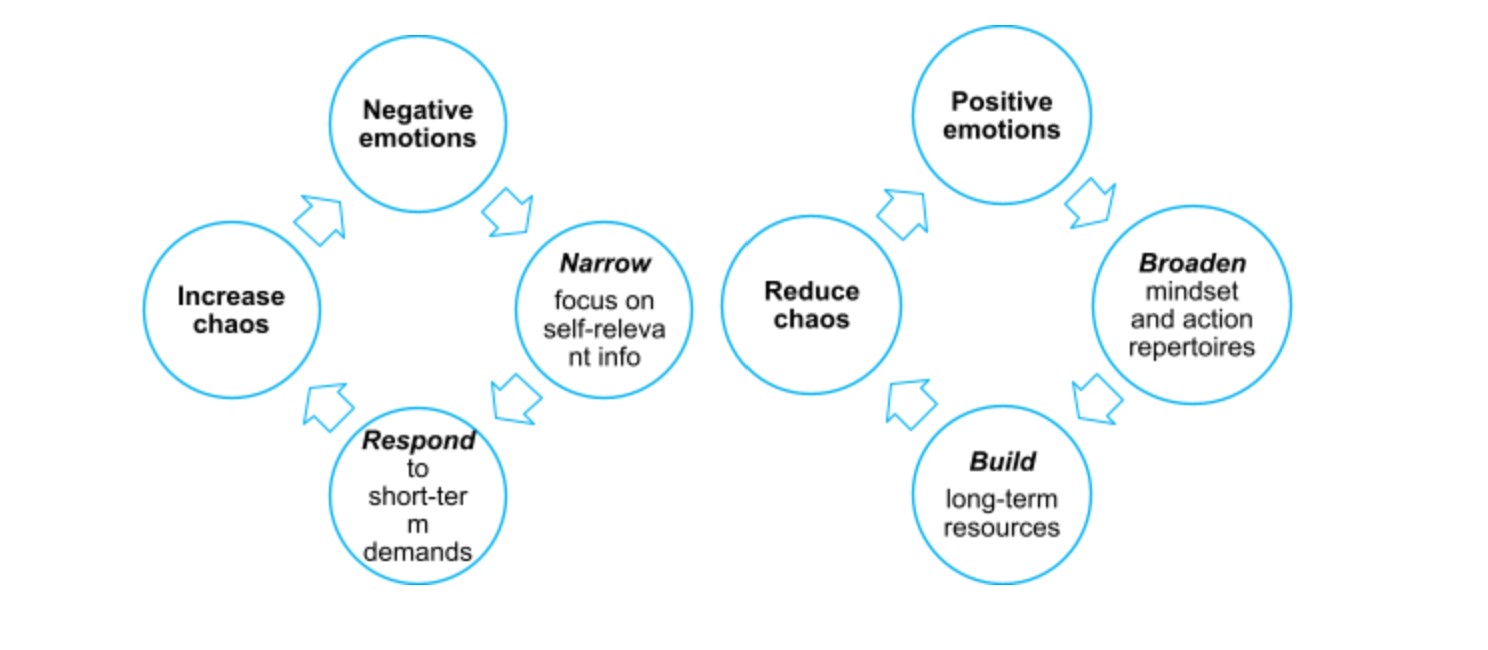
Figure 2. Positive feedback loop processes for positive & negative emotions
Experiencing positive emotions internally first help to broaden one’s cognitive and behavioural repertoires. Brain imaging studies have shown that positive emotions broaden the scope of physiological visual attention and expand people’s repertoires of openness to new experiences. At the interpersonal level, induced positive emotions increase people’s sense of “oneness” with close others and their trust in acquaintances
Benign neglect, compassion and equanimity, respectively, can be reflected as a progressive gradation of support when a client experiences difficult emotions. Friendliness, joy and equanimity, respectively, are positively reinforcing attitudes towards the clients’ progressively pleasant affective tonalities. It is initially through the therapist’s support and explicit attitudinal intervention that a client can learn to reduce their challenging states, down-regulating affective processes. By modelling an attunement and responsiveness to clients’ nervous system states, affect and socio-cognitive processes through the embodiment of brahma-viharic attitudes, clients will eventually learn to regulate their own waves, changes and movements in their bio-affective rhythms. As the client understands the importance of this attitudinal practice (clarifying this as a goal of therapy), their task is to learn to support and regulate themselves in the therapeutic setting and in their daily life.
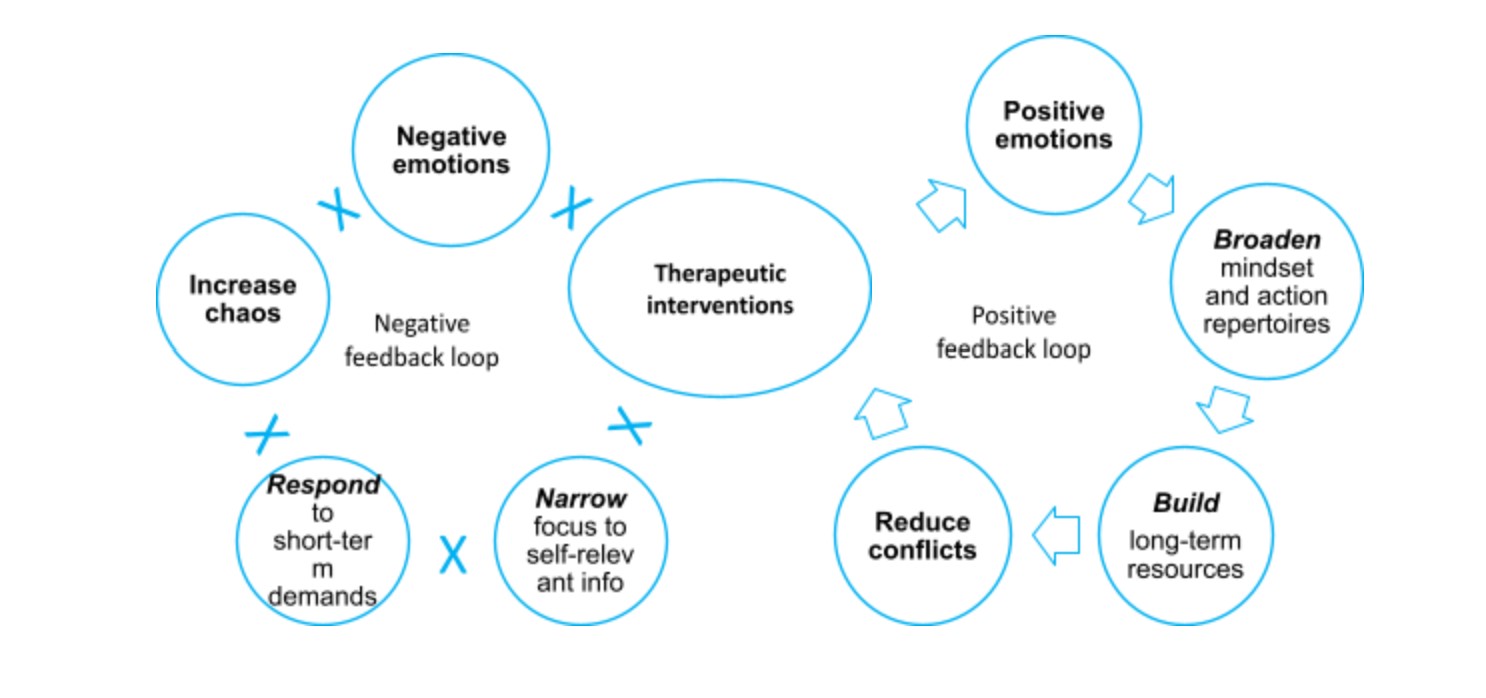
Figure 3. Therapy-generated affective positive & negative feedback loops
In effect, positive emotions will develop a momentum via positive feedback loops of broadening and building (escalatory process), and negative emotions will be reduced both in their intensity and frequency via negative feedback loops of narrowing and responding (de-escalatory process).
A transcendent trajectory
As clients begin their therapeutic journey, regulation entails a down-regulation of negative states. As the therapist, through their quality of presence, embodiment and modelling of brahma-viharic attitudes, clients are able to skillfully negotiate challenging bio-affective states, and upregulate positive states. The below diagram describes this journey as a rising curve to the highest affective tonalities, followed by a reduction in the intensity. The declining curve, indicating a reduced intensity in positive affect, is informed by Buddhist meditative maps of jhanas. These are states of increasing happiness, absorption and refined perception.
The Buddhist path to de-pathologize the psyche implies a gradual clarification, a ridding of confusion, a refinement of perception of one’s direct experience. The affective trajectory in the diagram, from left to right, describes a progressively less constructed, more subtle nature of phenomena. This means that very negative experiences are more constructed, more entangled, more fabricated than positive experiences, which are further along the process (more to the right). As affect matures and deepens, it reaches even more subtlety and stillness, taking form in equanimity, and progressively deeper states of equanimous experiences. These are experienced as higher forms of happiness the positively-valenced states preceding them, involving non-dual perception and further sensitivity to the emptiness of inherent existence of experience and phenomena.
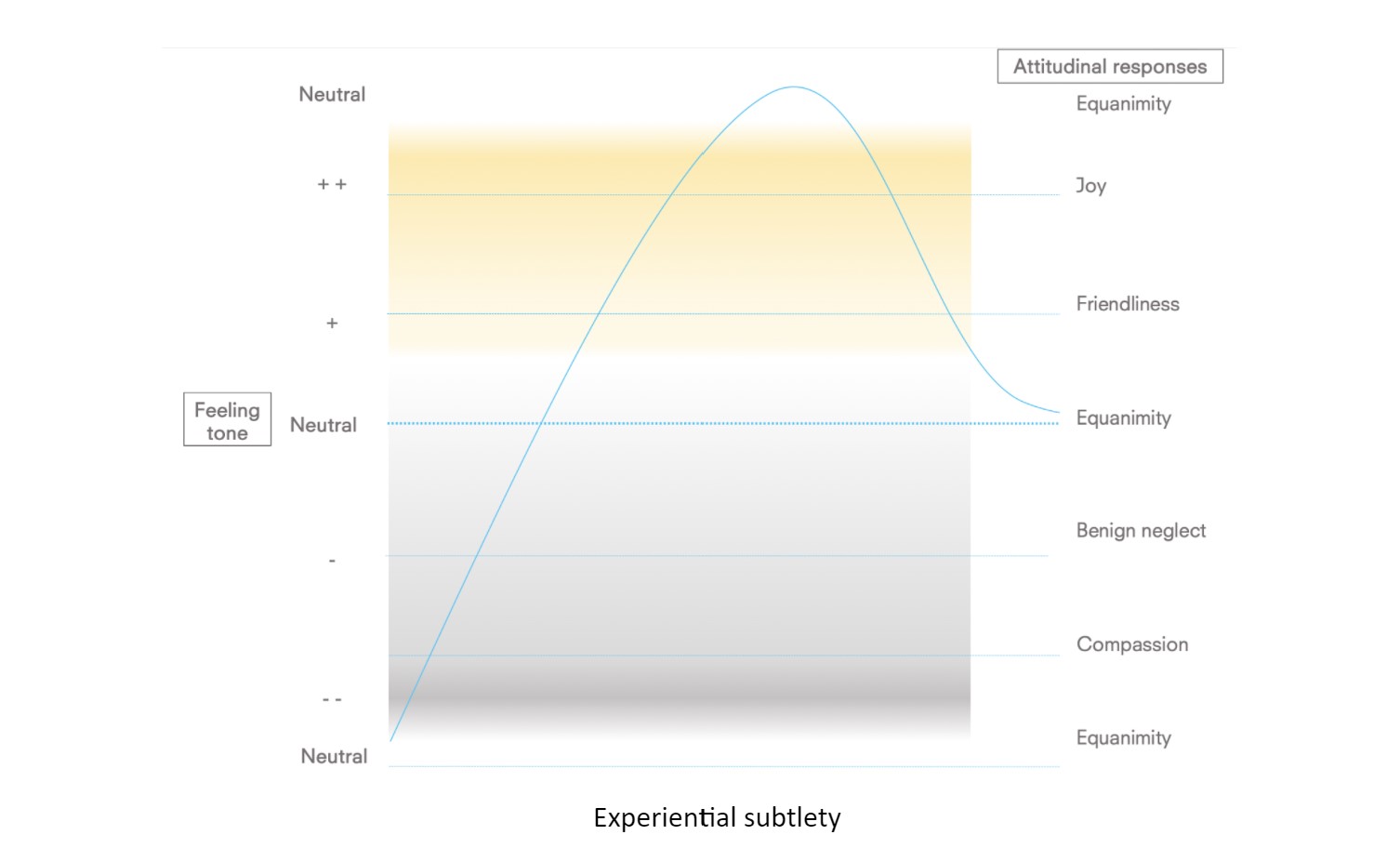
Figure 3. Experiential subtlety
Trauma & jhana
There are important implications and correlations with this conceptual framework and that of trauma healing. Trauma occurs as a result of a nervous system overwhelm of sympathetic arousal in the autonomic nervous system (Porges & Buczynski, 2011). This leads to the nervous system to transition from sympathetic (fight and flight) to dorsal vagus (freeze) activations. A client in freeze will experience a much-reduced access to sensation, affect and orientation, and reduced sensitivity to mental images and cognitive content.
Interestingly, scientific evidence is emerging showing similarities in neurobiological substrates of jhanas and freeze states, except that these states are profoundly resourceful and transformative. They differ in three respects: (i) the preexisting conditions leading to its emergence (enjoyment training vs shock), (ii) the conceptual framework attempting to understand them (refinement of understanding the phenomenal nature of experience vs pathology) and (iii) the contiguous neurobiological networks (isolated vs interconnected) and physiological rhythms of state transition (rapid and erratic vs smooth and systematic). Freeze, a system evolutionarily designed to process backlog of sympathetic overstimulation, then, may also be a profound opportunity for cosmic connectivity and transformative meaningfulness.
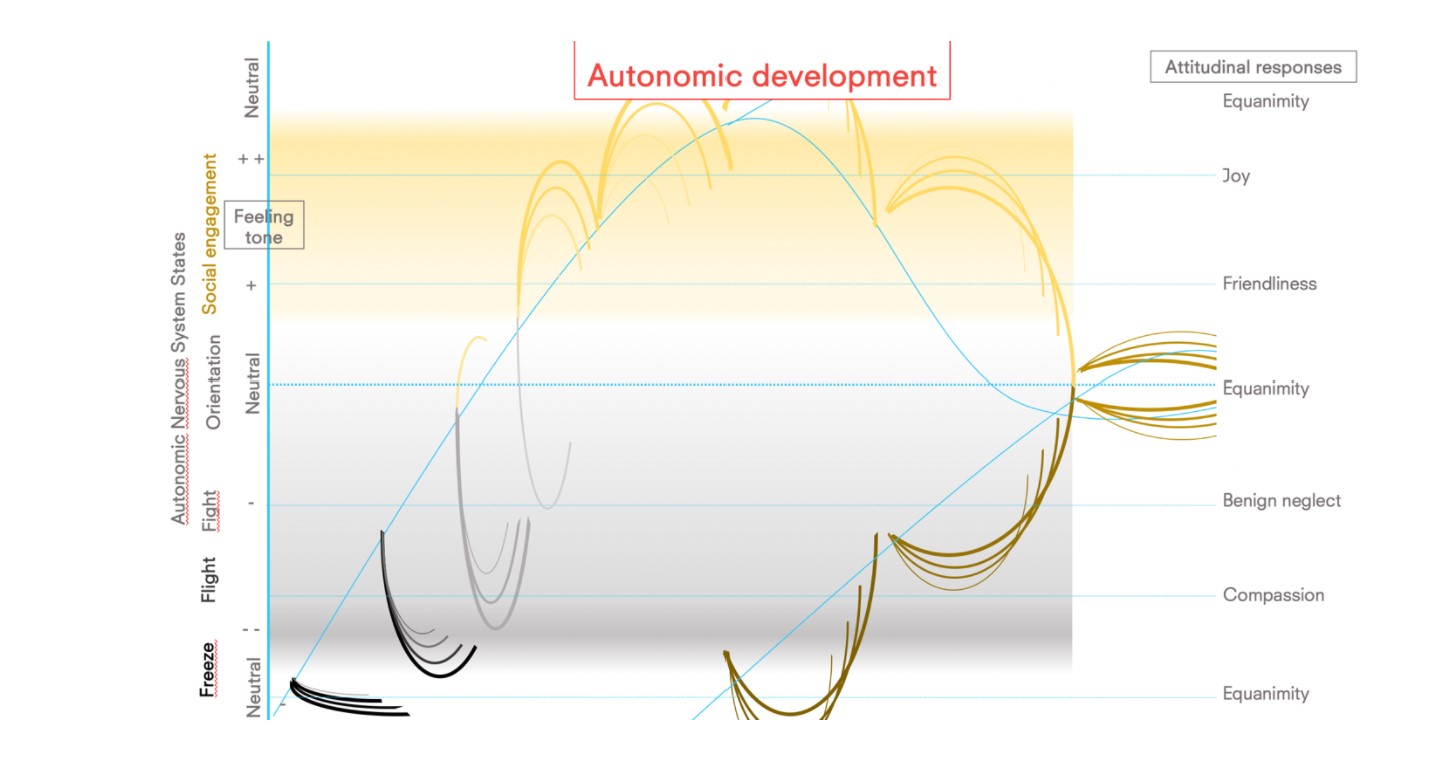
The threads on the diagram, starting black and only rising, shifting through shades of grey, yellow and culminating in gold, describe the client’s progressive movement of integrated bio-affective regulation. Freeze states appear at the bottom of the graph, and clients often begin their therapeutic engagement with strong patterns of freeze, as described by the thick black threads.
Conclusion
Therapeutic presence with brahma-viharic attitudes, followed by the client’s self-organizing attunement to bio-affective states, and regulatory capacity of them, enables the process to evolve towards greater positivity (in thickening yellow threads). After reaching the peak of positivity, the system is able to experience the pendulation between approach (social engagement) and avoidance (fight-flight-freeze) states, with increasing rhythmicity and synchronicity. These wavic patterns help the process of somatic integration, leading to new levels of bio-affective agency emerging when the threshold for holding capacity of the complex interactions has been reached.
May this article be of benefit for all beings!
You can learn more about the application of these evolutionary and systemic models, their associated neuroscientific empirical research, practice and clinical interventions along with time for practice in our workshops, courses and trainings at www.neurosystemics.org.
Together we go further.
References
Fredrickson, B. L. (2001). The role of positive emotions in positive psychology: The broaden-and-build theory of positive emotions. American psychologist, 56(3), 218.
Hinsdale, M. J. (2012). Choosing to love. Paideusis, 20(2), 36-45.
Porges, S. W., & Buczynski, R. (2011). The polyvagal theory for treating trauma. Webinar, June, 15, 2012.
Rogers, C. R. (1986). Carl Rogers on the development of the person-centered approach. Person-Centered Review.



